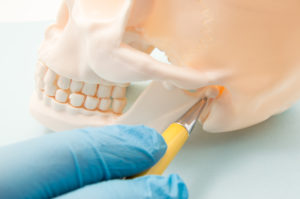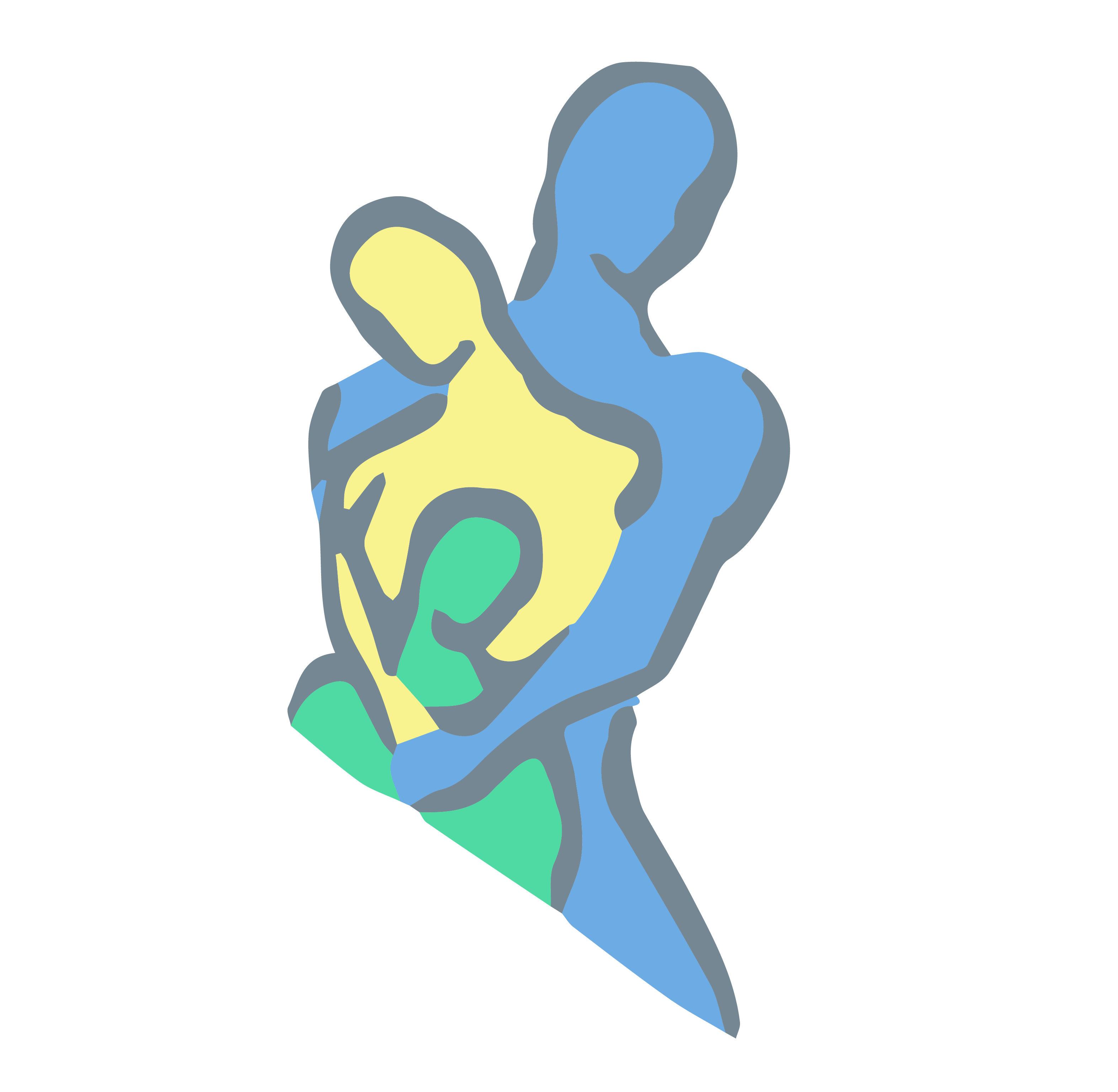TMD
TMD stands for Temporomandibular Disorder. This is when your have pain in the temporomandibular joint (TMJ).
ANATOMY
The temporomandibular joint (TMJ for short) refers to the area of the head where your jaw (mandible) meets the side of your skull (the temporal bone). Where the two bones meet, there is a small disc of cartilage to keep the bones from rubbing together and to ensure smooth movement of the joint. The TMJ acts like a sliding hinge, allowing your jaw to move up, down and side to side so that you can talk, chew and yawn.

CAUSES
Four main factors can contribute to TMD:
- Injury to the jaw
- Stress and Grinding of Teeth
- Arthritis
- Connective tissue disorders
Having one or more of these can put you at an increased risk of developing TMD. They can cause the muscles of the jaw to become irritated or the disc to be displaced or the smoothness of the joint to be disrupted.
SYMPTOMS
The symptoms of TMD include:
- Pain or tenderness of the jaw or around the joints themselves
- Pain in or around the ear
- Difficulty chewing
- Jaw locking
- Jaw clicking
- Grating sounds when chewing

HOW CAN CHIROPRACTIC HELP?
Chiropractors look at the bones of the spine to ensure that they are aligned properly. When the bones are out of alignment, they can cause improper movement. This improper movement in the jaw can lead to a wearing away of the disc between the jaw and the skull. A good analogy would be if your car need a front end alignment. You may not notice it right away, but over time, it will cause un-equal wear and tear on your tires.

